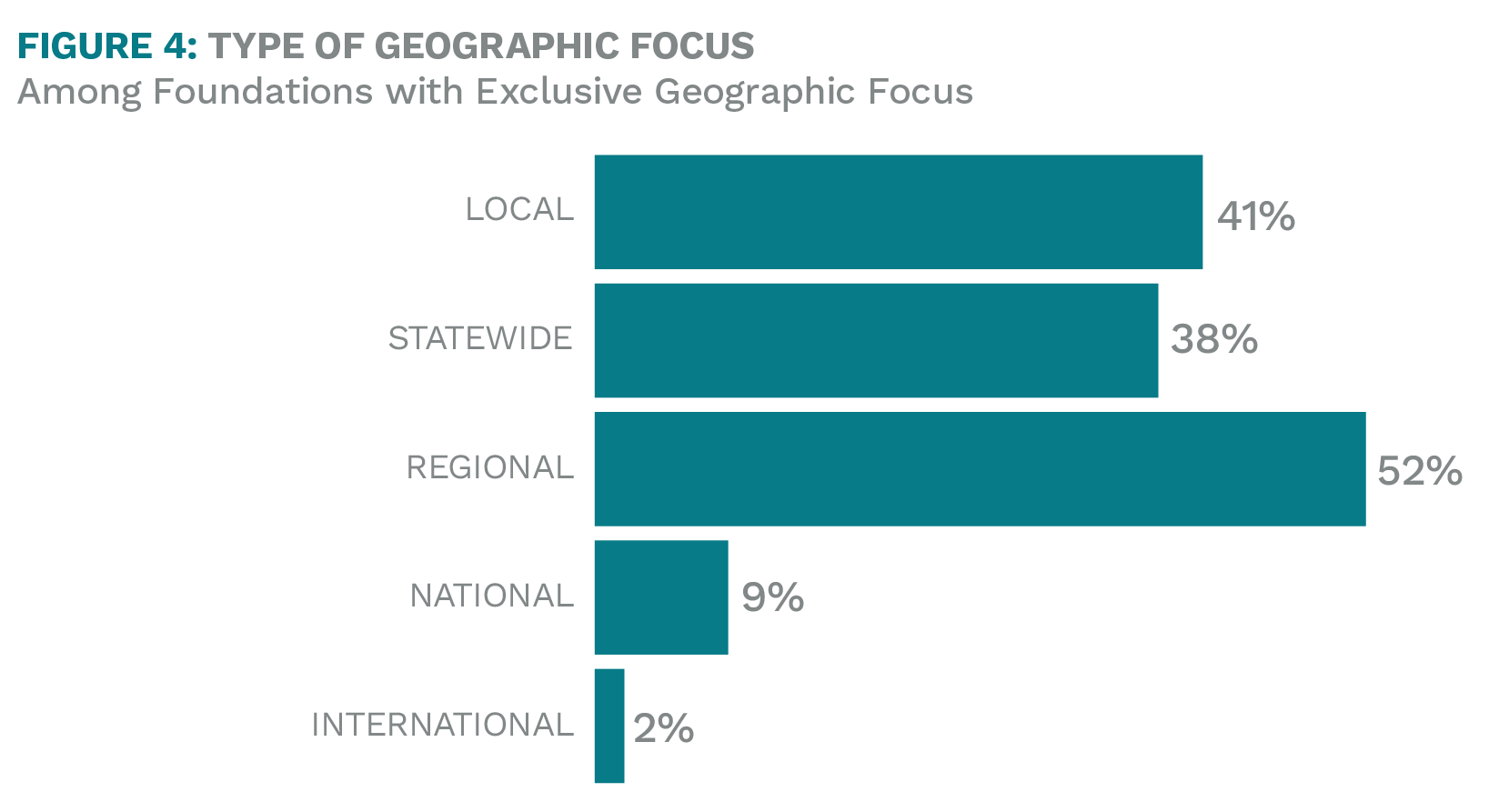Trends 2020: Foundation Identity
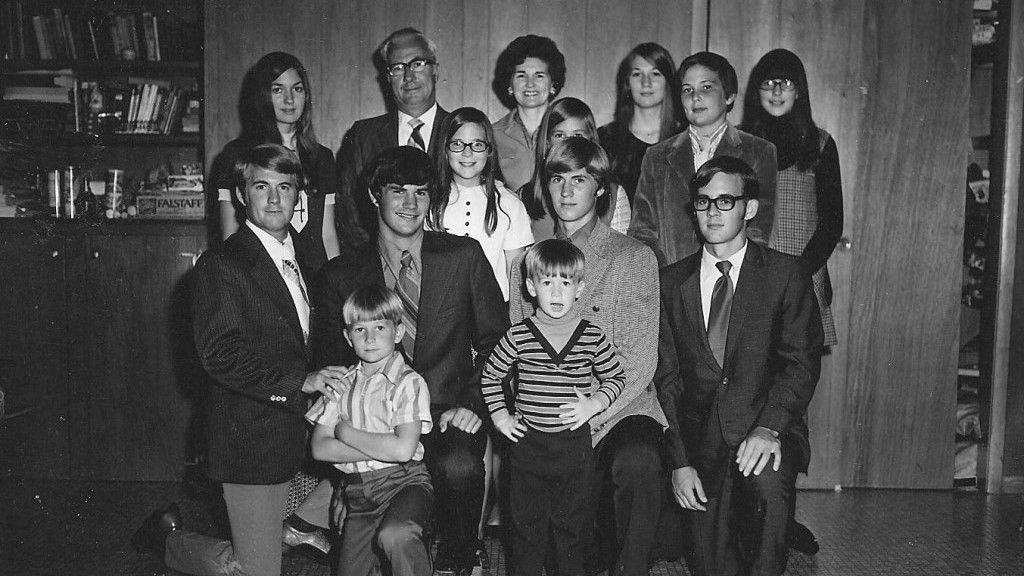
The Tracy Family, courtesy of the Tracy Family Foundation.
This excerpt from NCFP’s Trends 2020 study shares data and analysis regarding various US family foundation giving trends, focus of the foundation, family member dynamics, operational effectiveness, and much more.
Size and Scope
By conservative estimates, family foundations represent more than 60% of the approximately 90,000 grantmaking foundations in the country; there are more family foundations than all other forms combined in the US.
Family foundation demographics have not changed dramatically since 2015. Close to three-quarters of all family foundations have less than $10M in assets, and more than 70% of all foundations were created in the past 30 years.
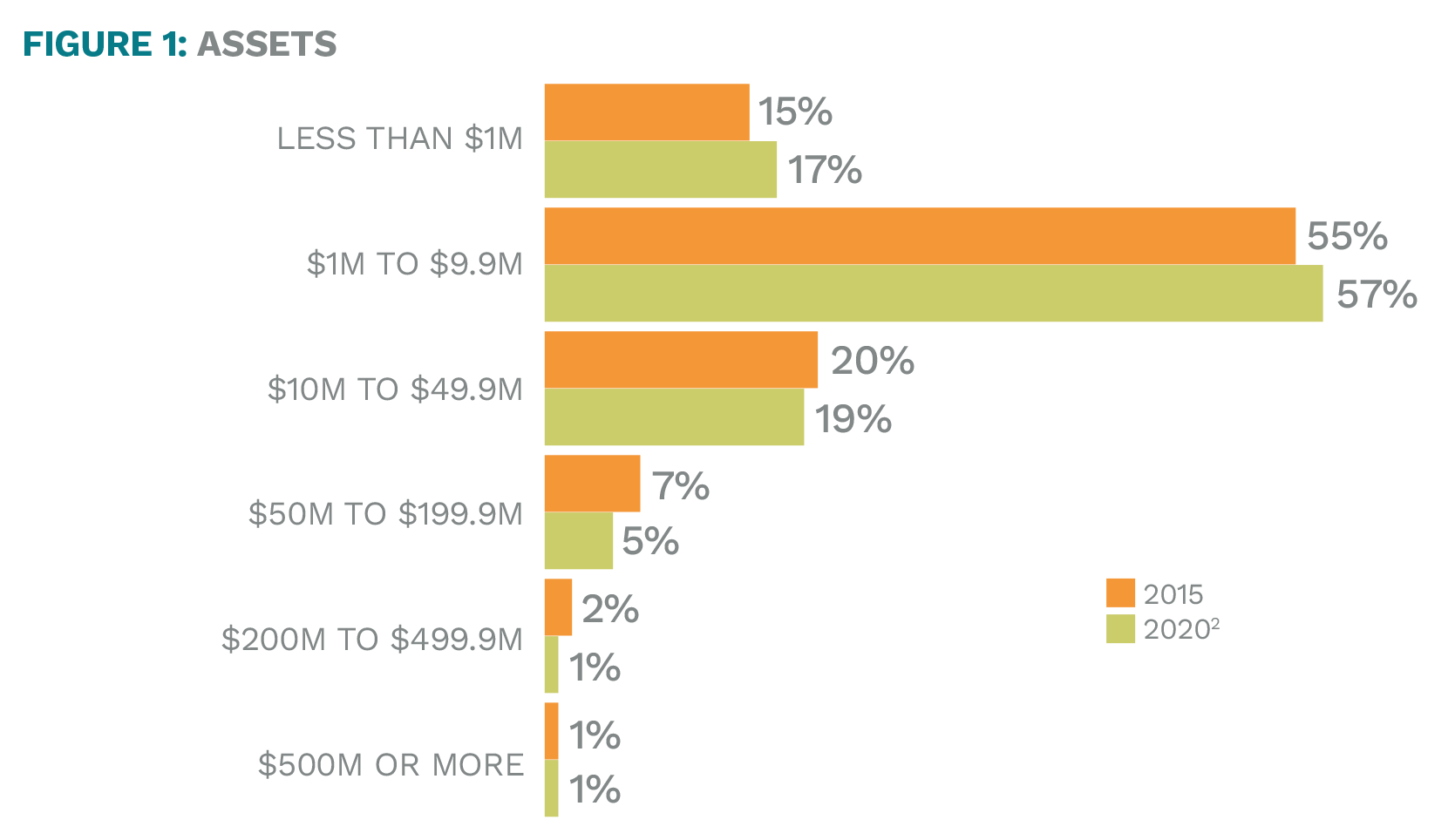
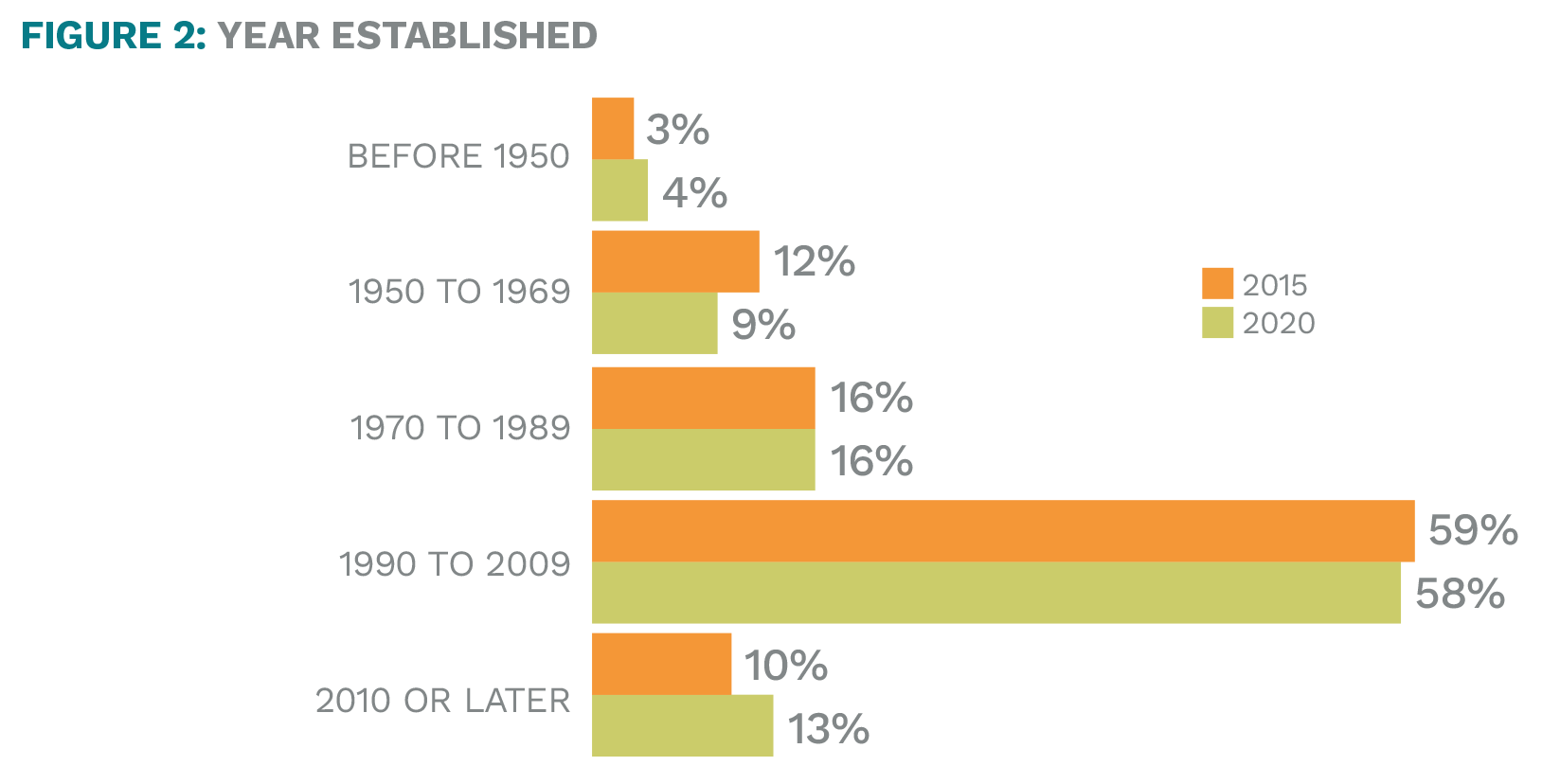
2 For purposes of this report, in all graphs “2015” refers to figures presented in NCFP’s 2015 Trends Study (data collected in 2014)
and “2020” refers to figures presented in this Trends 2020 report (data collected in 2019).
Focus of Foundations
Most family foundations have a specific focus—either on a geographic region and/or on one or more issue areas or populations. Nearly two-thirds have a geographic or place-based focus, and about half focus on specific issues. Only 4% of all respondents indicated a racial/ethnic/cultural focus for their current giving.
Older and larger family foundations focus their giving geographically, while the vast majority (82%) of newer family foundations (those formed since 2010) focus their giving on issues. Compared to 2015 Trends Study results, the oldest foundations are slightly more likely (81% vs. 78% in 2015) to be place based than they were five years ago, while the newest foundations are significantly more likely (82% vs. 61%) to focus on issues than they were five years ago. The largest foundations are most focused regionally, while the smallest more often focus locally.
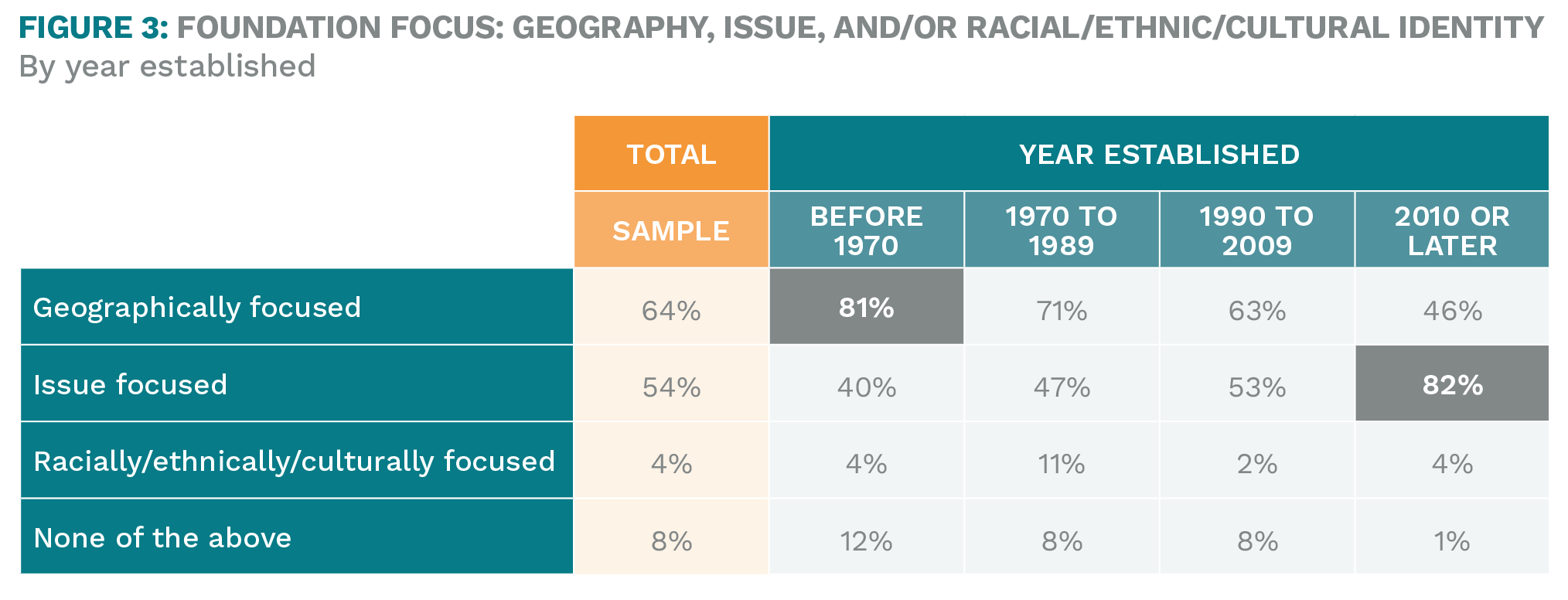
Defining Geographic or Issue Focus
Of the family foundations who reported being exclusively focused on geography, most are place-based funders who focus funders who focus on a combination of local (41%), regional (52%), or statewide (38%) efforts, a smaller number define the geographic focus as national (9%) or international (2%).
Consistent with findings from 2015 Trends Study, top issues of focus for family foundations include education and poverty. The largest (by assets) most often focus on education (60%). Other common issues supported are social services, health, the environment, providing economic job opportunities, and community initiatives/development.
For more on the interests, strategies, and challenges of place-based family foundations, see NCFP’s special report, Pride of Place: Sustaining a Family Commitment to Geography.
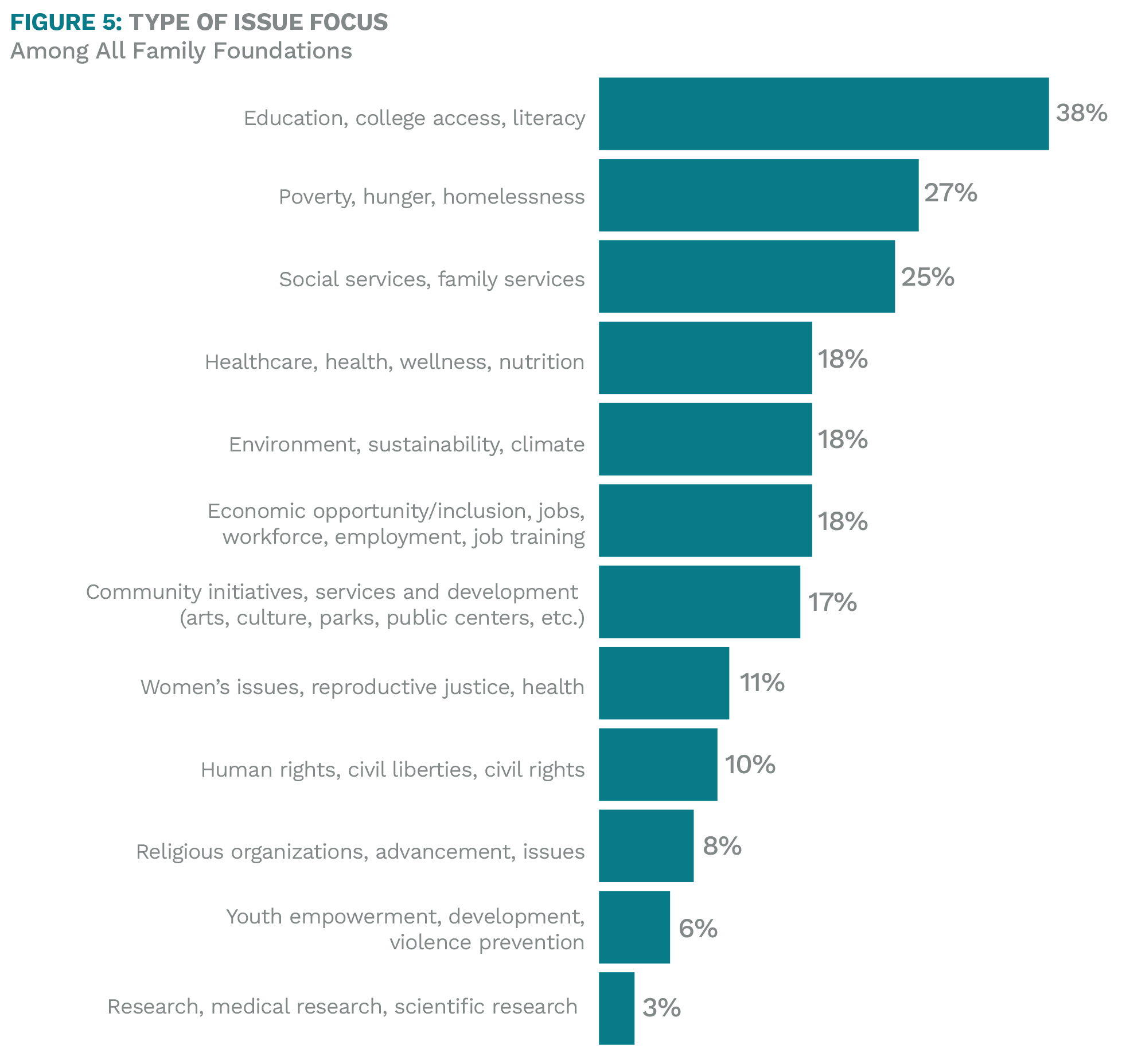
Issue Focus by Date Founded
Newer family foundations (those created since 2010) appear to have significantly different giving priorities than all other foundations.
64% of newer family foundations select “poverty, hunger, or homelessness” as one of their top issue focus areas (vs. 17% of all other foundations in the sample), followed by “economic opportunity/ inclusion” (41% vs. 12% of all others). Only 23% of newer foundations list education as a top choice versus 42% of all other foundation respondents.
Older family foundations are much more likely to list “religious organizations, advancement, issues” as a top area of interest. 24% of family foundations created before 1970 list this as a top choice, more than twice that of any other time period.
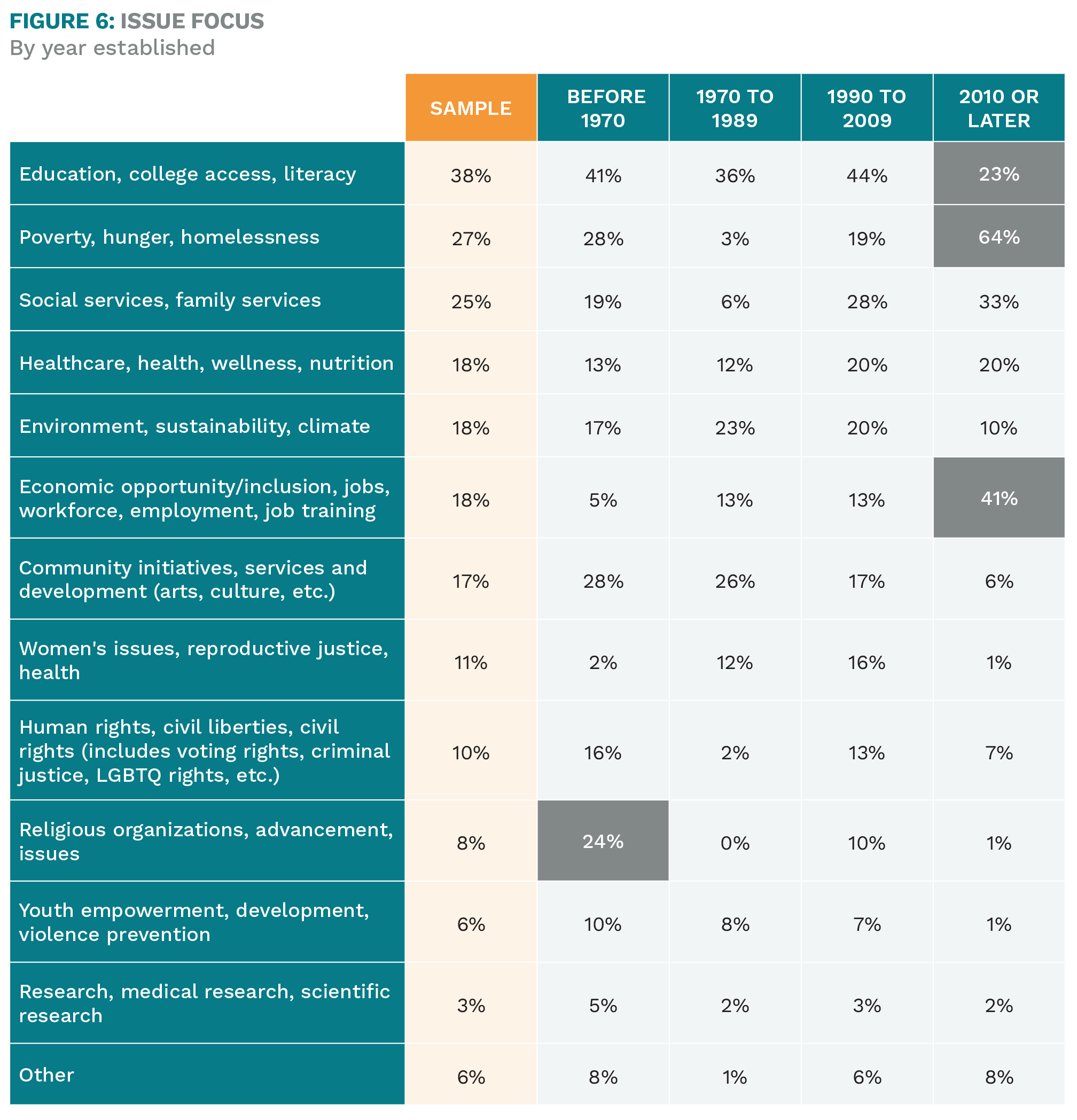
Issue Focus by Strategic Lifespan
At some point, all foundation donors and boards must ask the question: do we operate indefinitely or limit the lifespan of our family foundation? NCFP defines this as the “strategic lifespan” discussion, and tracks key differences in the governance, management, and grantmaking practices of foundations who choose to limit their lifespan and those who plan to exist in perpetuity.
For limited life family foundations, the top two issue areas reported are “community initiatives, services, and development” (38% vs. 15% of all other foundation respondents), and “economic opportunity/ inclusion” (37% vs. 16% of all other respondents).
For perpetual family foundations, areas of significant focus include the environment and climate (27% vs. 15% of all others) and healthcare (30% vs. 14%). At the same time, perpetual family foundations express much less focus/interest on “poverty, hunger and homelessness,” with only 11% listing this as a top priority (vs. 32% of all other family foundations).
“Regardless of their motivations and goals, more and more families are taking the time to think about and discuss how they should manage their assets for the greatest possible impact. Some families are also building discussions about spend-down versus perpetuity into their governance—choosing to revisit the question periodically as their foundations change over time.” –Virginia Esposito, Founder, National Center for Family Philanthropy
Reasons for Focus
Connection to the community or issue and the founders’ intent (both cited by 61% of respondents) are the primary drivers of family foundations’ focus, with “directing resources for greatest impact” (47%) and “history of funding in this area” (37%) also cited as common reasons for geographic or issue focus.
A focus on “family connections to issues or a community” motivates the newest foundations, and a “long history of funding in a particular focus area” motivates the oldest and largest foundations.

Operational Effectiveness
90% of family foundations across all age ranges self-report that their operations are “effective,” with 55% of all respondents answering “5 – strongly agree” when asked on a five-point scale “How much do you agree or disagree: The internal operations of the foundation are effective?” An additional 35% self-reported “4 – somewhat agree.”
The largest foundations, as well as those who will operate in perpetuity and those who have non-family serving on their board or staff, are most likely to strongly agree that their operations are effective.
Family Member Dynamics
Two-thirds of foundations strongly agree that family members associated with the foundation work well together. Smaller and newer foundations are most likely to feel this way, as are foundations that report engaging the next gen in one or more ways, and those with non-family board members. Founders are somewhat more likely than others to agree that family members work well together.
Foundation Impact on Issues
45% of foundations strongly agree that they are having a significant impact on the issues they support. One-third agree they are having an impact.
Larger foundations, regardless of size, are more likely than smaller ones to consider their impact as significant. Among the small and medium sized foundations, newer foundations more often rate their impact as significant.
Founders rate their foundation’s impact less favorably than others (only 33% answered “strongly agree,” vs. 43% for board members/family consultants, and 54% for staff members).
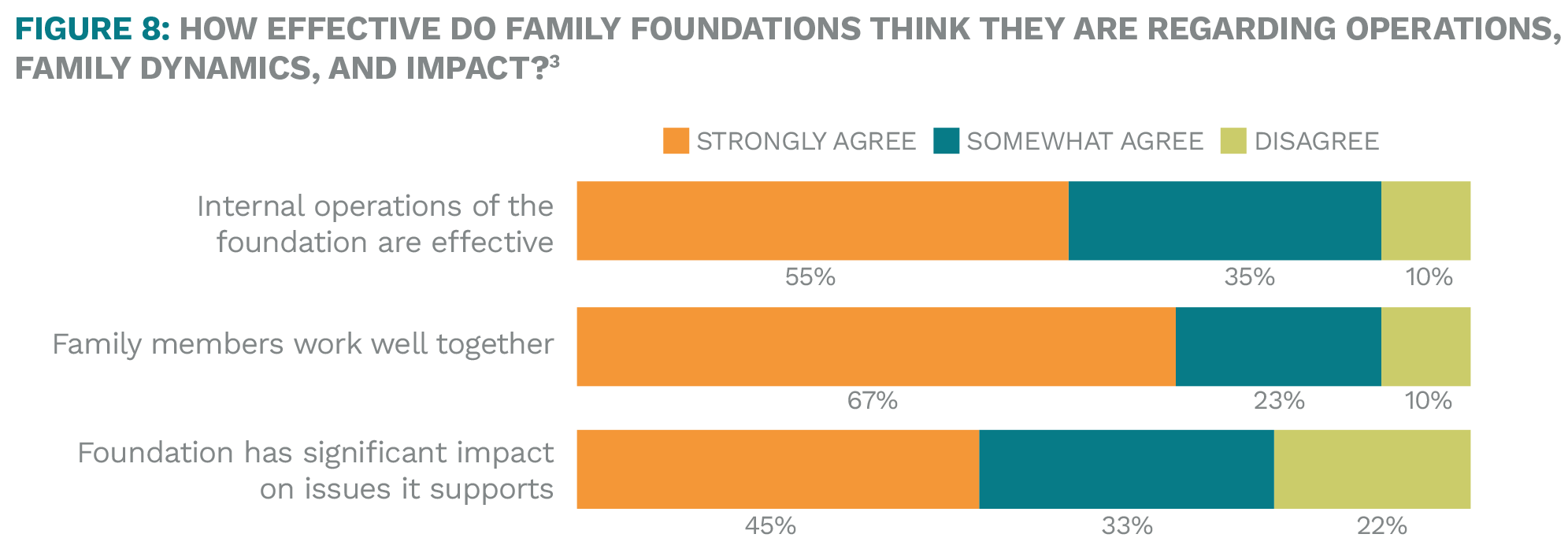
Overall Effectiveness
Approximately one-quarter of family foundations self-identify as “very effective” in all three aspects of their work—operations, impact, and family dynamics. These respondents have several interesting characteristics with regard to governance, grantmaking, and family involvement.
These foundations are significantly more likely to report having at least one non-family member on the board, and less likely to allow discretionary giving by board members. 48% of self-identified “very effective” foundations allow discretionary grants, while 69% of “all others” do (meaning those foundations that did not self-report as “very effective”). Only 21% of “very effective” foundations provide board compensation, while 40% of “all others” do.
3 “Strongly agree” is defined as those selecting 5 on a five-point scale; “somewhat agree” refers to those selecting 4; and “disagree”
refers to those selecting 1,2 or 3.
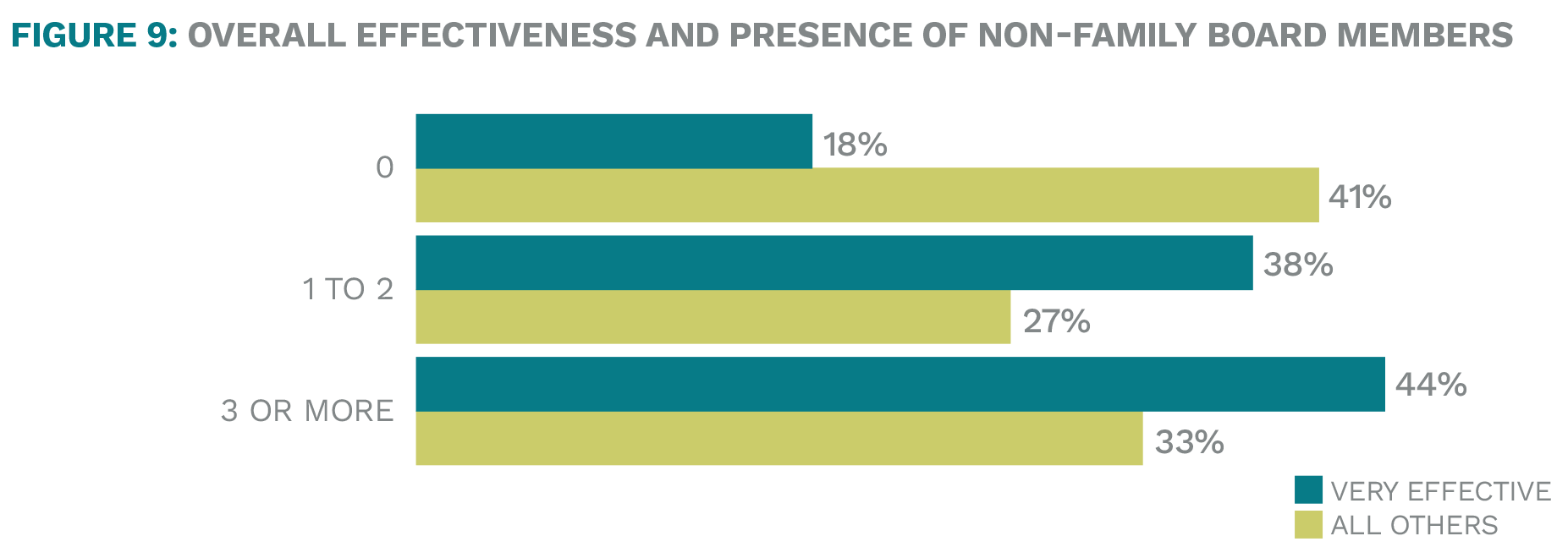

Self-reported “very effective” foundations also appear to place more importance on the needs of group decision making rather than individual discretion, placing less importance on the “interests of individual board members.”
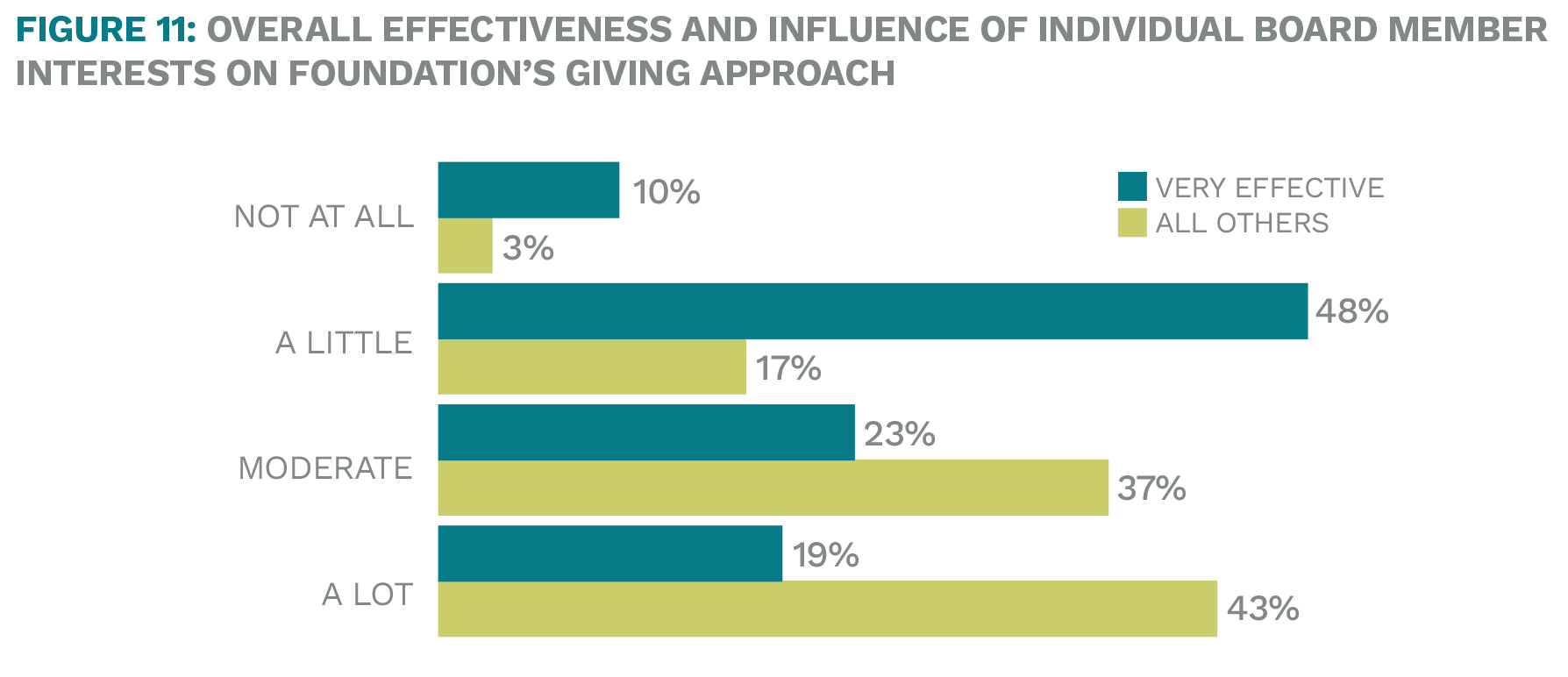
They are more likely to focus on governance as one of the areas in which they spend the most time and attention, and less likely to focus on “learning about grantmaking and focus areas or issues.” These foundations are also more likely to have formalized governance practices and written governance policies.
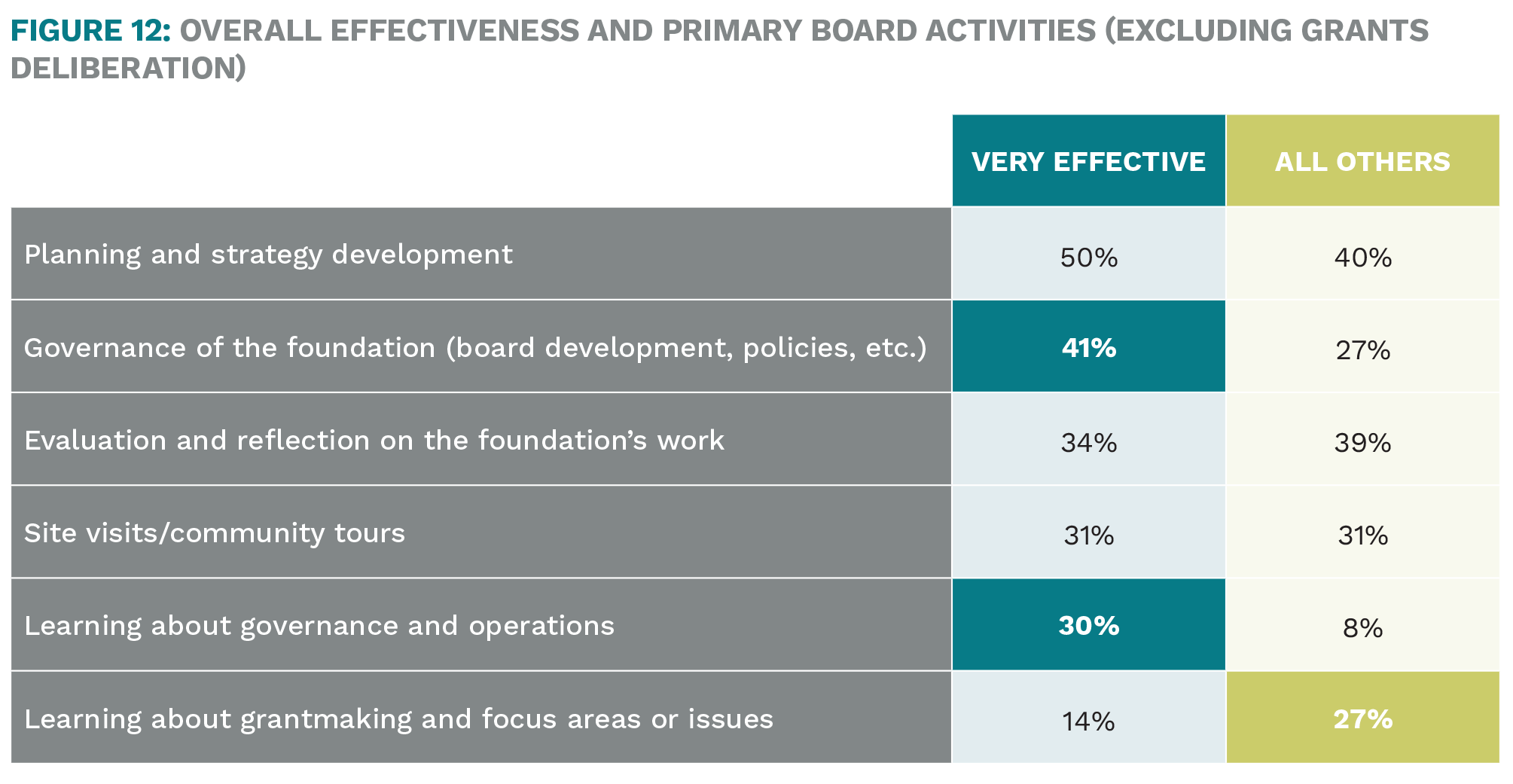
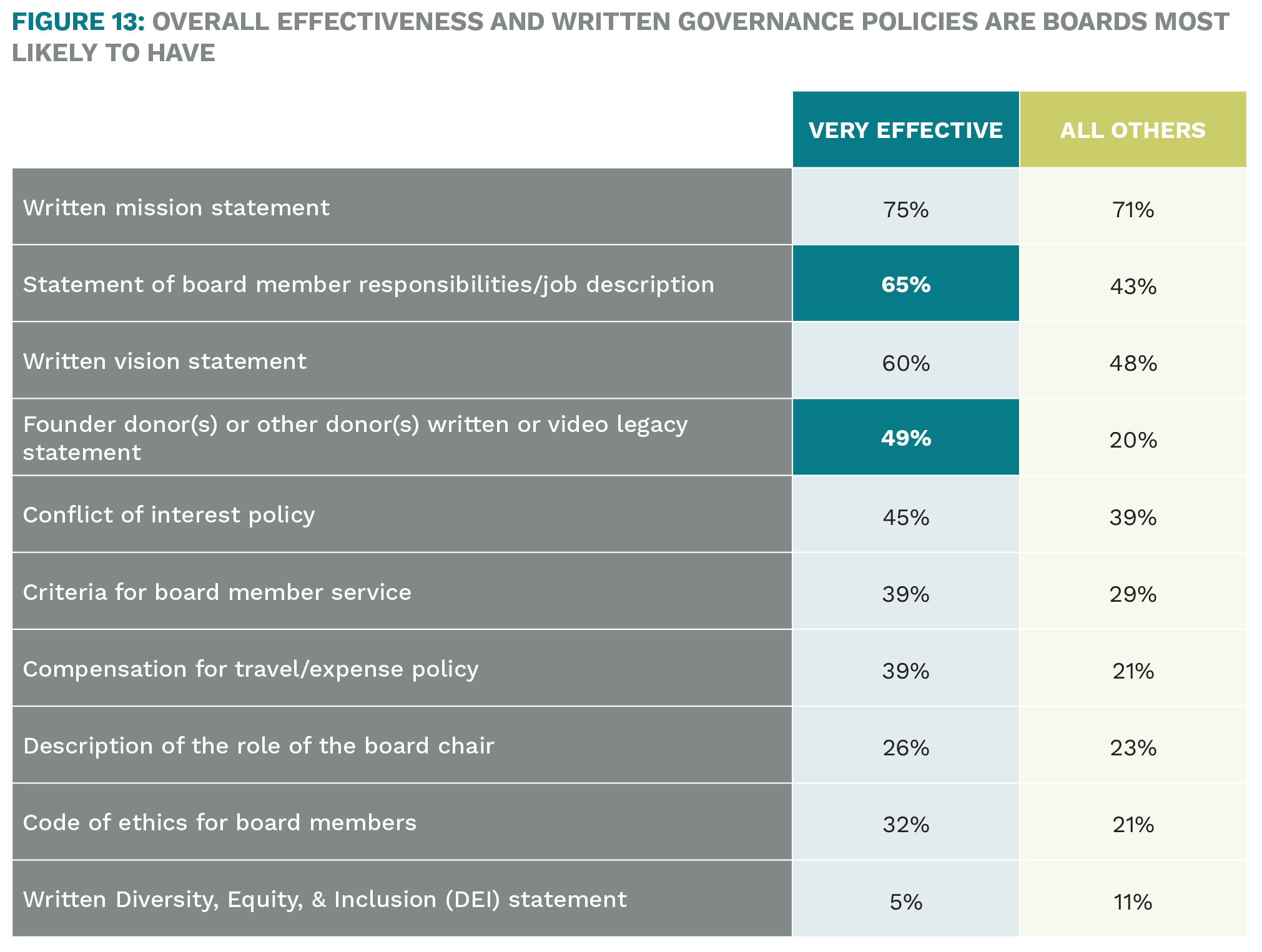
Additionally, self-reported “very effective” family foundations are more likely to closely follow donor intent than others.

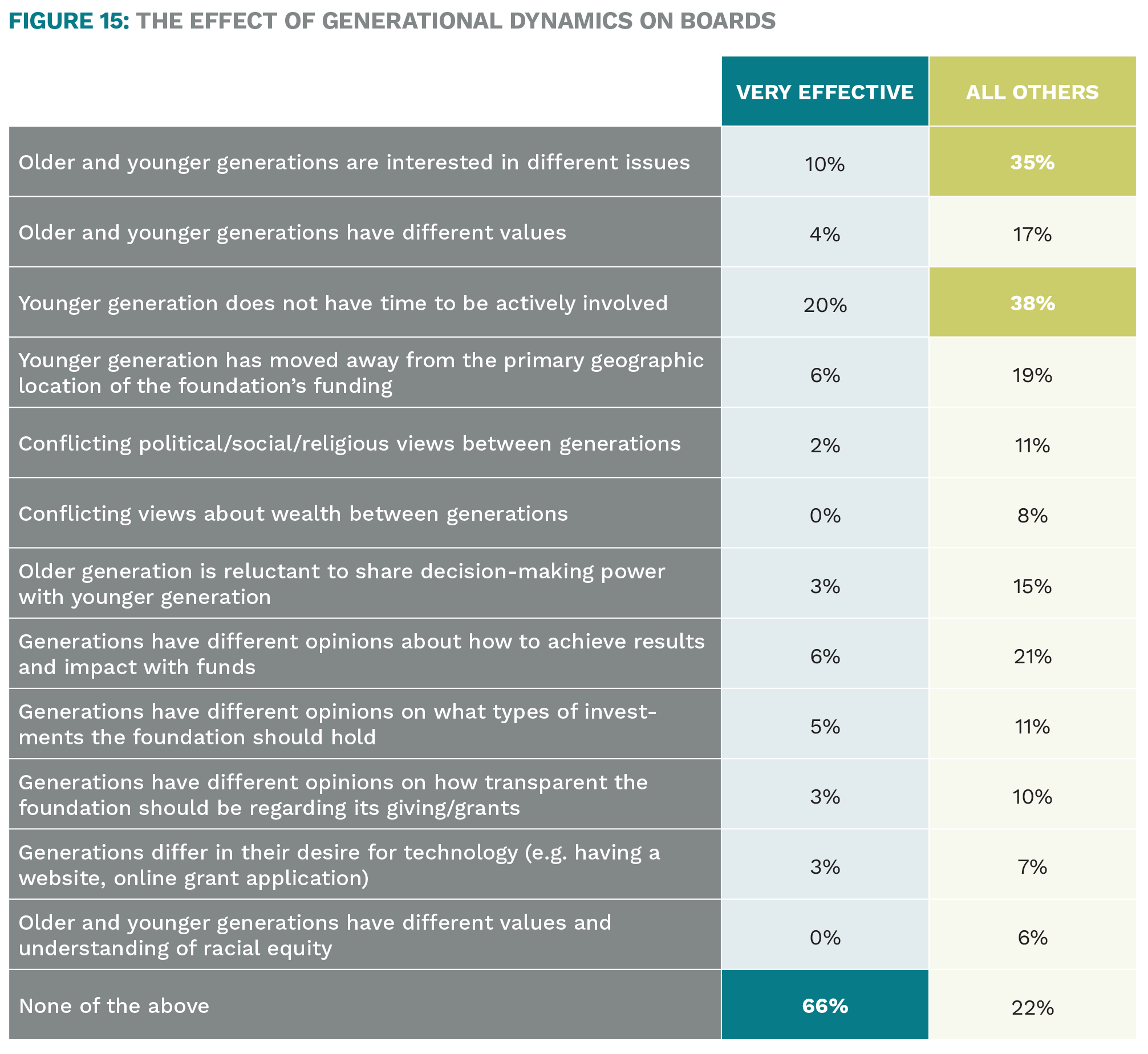
Finally, self-reporting “very effective” family foundations consistently report far fewer challenges regarding generational dynamics and differences.
Effectiveness and Strategic Lifespan
Perpetual foundations are more likely to strongly agree with the statement “the foundation is having a significant impact on the issues it supports.” Specifically, 53% of perpetual foundations strongly agree, while only 35% of foundations that have decided to spend out strongly agree. Perpetual foundations are also much more likely to strongly agree with the statement “the family members engaged in the foundation work well together.” 71% strongly agree with this statement, while only 43% of foundations that have decided to spend out strongly agree.

